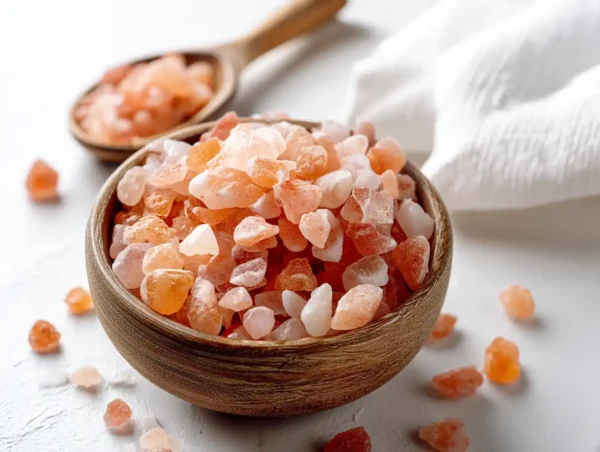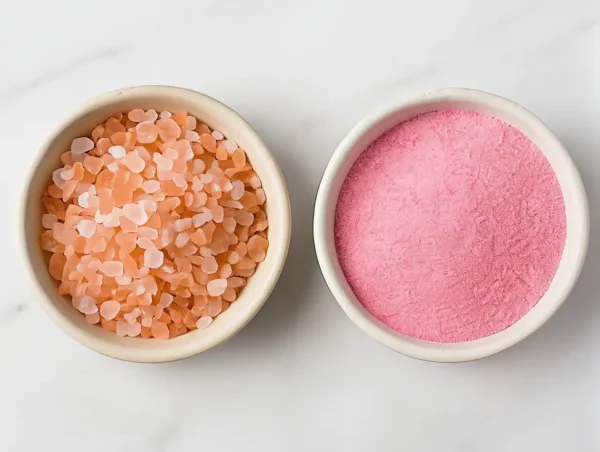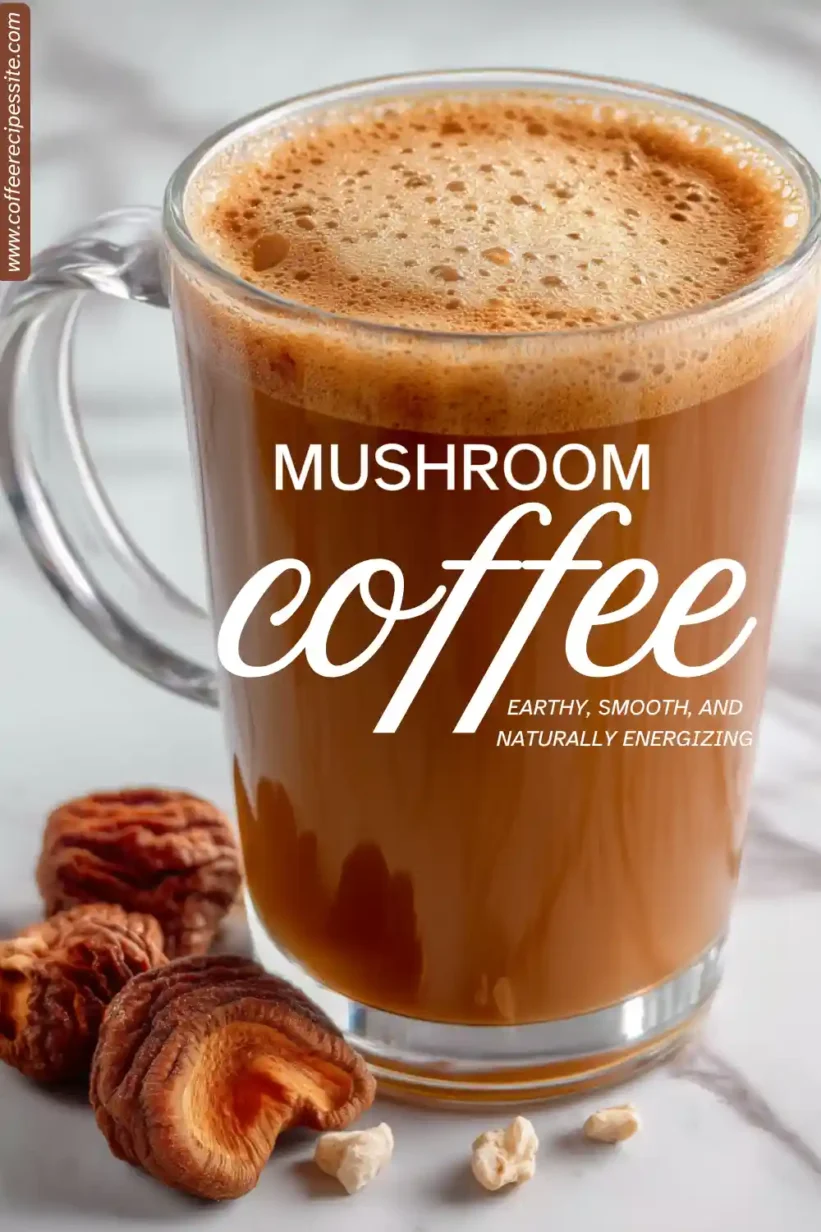
Table of Contents
What is Mushroom Coffee?
Mushroom coffee is more than a wellness buzzword. It’s a blend of regular coffee beans with powdered functional mushrooms, creating a drink that feels both ancient and modern. While it’s making waves in today’s superfood culture, its roots stretch back to traditional herbal practices in Asia and even wartime Europe.
Definition & Origins
At its core, mushroom coffee combines ground coffee with mushroom extracts or powders. I first came across it in a market in Chiang Mai, where reishi teas were served as morning tonics. History shows that chaga was brewed in Finland during World War II when coffee was scarce, as noted by Wikipedia. In China, reishi has been used for centuries in herbal medicine, according to Harvard Health. Unlike other herbal coffee alternatives, this coffee keeps part of coffee’s familiar flavor while weaving in the benefits of adaptogenic fungi.
Functional Mushrooms Commonly Used
Most blends feature four main players: reishi, chaga, lion’s mane, and cordyceps. Each brings a distinct flavor and a reputation built over centuries of use. Here’s a simple overview of these mushrooms, their taste, and the qualities they are most often associated with in traditional wellness practices:
| Mushroom | Flavor Profile | Traditional Reputation |
|---|---|---|
| Reishi | Bitter, woody | Stress relief, immunity |
| Chaga | Earthy, slightly sweet | Antioxidants, resilience |
| Lion’s Mane | Mild, umami | Focus, memory |
| Cordyceps | Nutty, warm | Endurance, energy |
To give you a visual, here’s what a set of common mushroom coffee ingredients might look like when arranged on a kitchen counter:
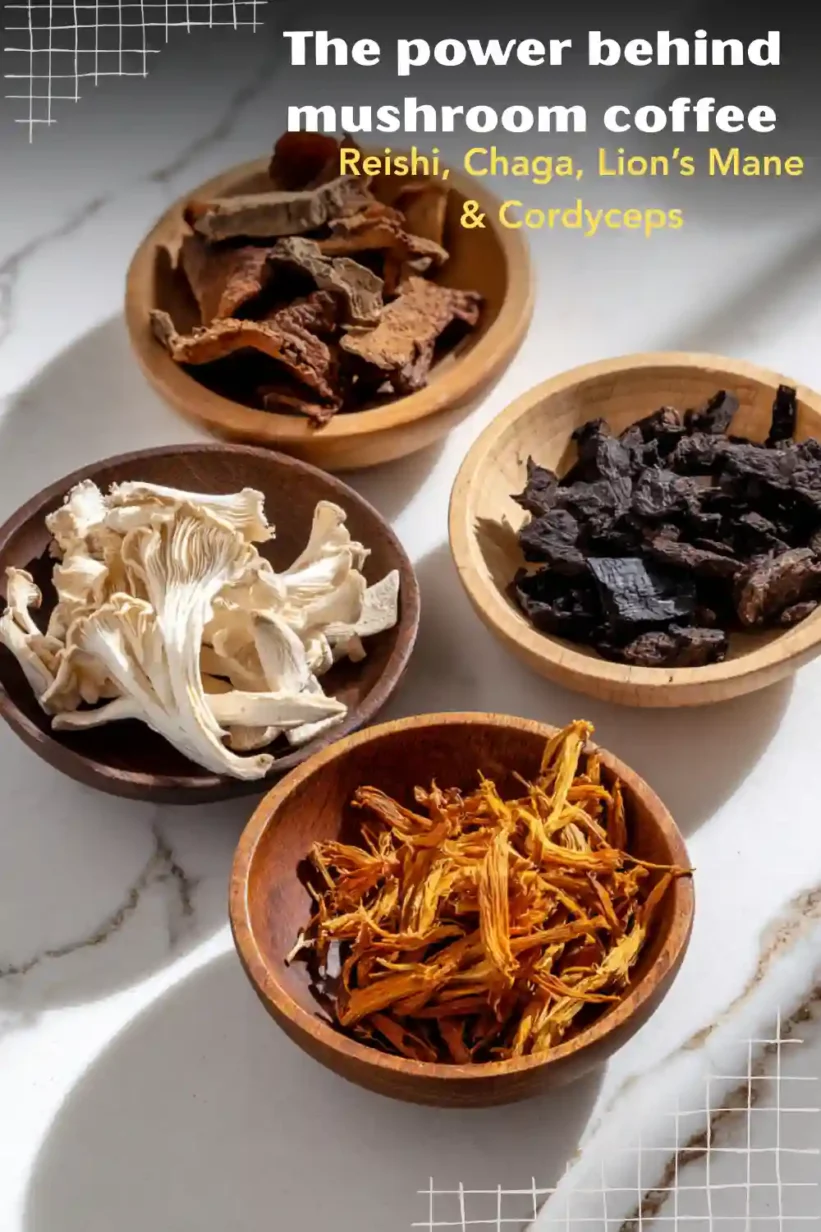
Health Benefits of Mushroom Coffee
From mountain markets to modern cafés, I’ve heard claims that mushroom coffee helps with everything from weight loss to sharper focus. While it’s not a miracle cure, both tradition and research point to potential advantages worth exploring. Here are four areas where this drink often gets attention.
Weight Management & Energy
When people ask about this adaptogenic drink for weight loss, the answer is not simple. Cordyceps has long been linked to stamina and endurance in traditional Chinese medicine, providing a natural energy boost. A moderate dose of caffeine may also help kickstart metabolism. Better sleep, often associated with reishi, can indirectly support weight control, according to Real Simple. As Verywell Health notes, the energy effect is gentler than regular coffee, which can make it a more sustainable choice. “Cordyceps has long been linked to endurance in traditional medicine.”
Digestion & Gut Health
Another common question is, does mushroom coffee make you poop? The truth is, it depends on your body. Chaga mushrooms contain fibers and antioxidants that may help digestive balance. Some fungi also act as prebiotics, feeding the gut’s beneficial bacteria. This could explain why some people report smoother digestion after drinking it. According to Verywell Health, certain mushrooms provide natural prebiotics that support a healthy gut microbiome. “Certain mushrooms act as natural prebiotics, supporting a healthy gut microbiome.”
Blood Sugar & Metabolic Support
A common question is, is mushroom coffee good for diabetics? The evidence is still developing. Some animal research suggests potential: a study in Scientific Reports found that polysaccharides from reishi improved insulin sensitivity and lowered blood sugar in diabetic mice. In humans, results are far less clear. A small trial summarized by the National Library of Medicine showed modest benefits, but other studies found no consistent effect. As Healthline notes, reishi may support blood sugar balance, but it should never replace medical care. “Ganoderma extracts showed promise in animal studies, but human evidence remains mixed.”
Fasting & Lifestyle
A final hot topic: does mushroom coffee break a fast? Plain mushroom coffee, without sugar or milk, contains almost no calories, making it compatible with intermittent fasting. The story changes if you add cream or sweeteners, those will break your fast. As Medical News Today explains, the fasting benefit depends entirely on how you prepare it. If you prefer a creamier version, check out this breve coffee recipe to enjoy once your eating window opens. “Black mushroom coffee is unlikely to disrupt fasting, but creamers and sweeteners will.”
Here’s a simple visual that sums up the main mushroom coffee health benefits as people often describe them:
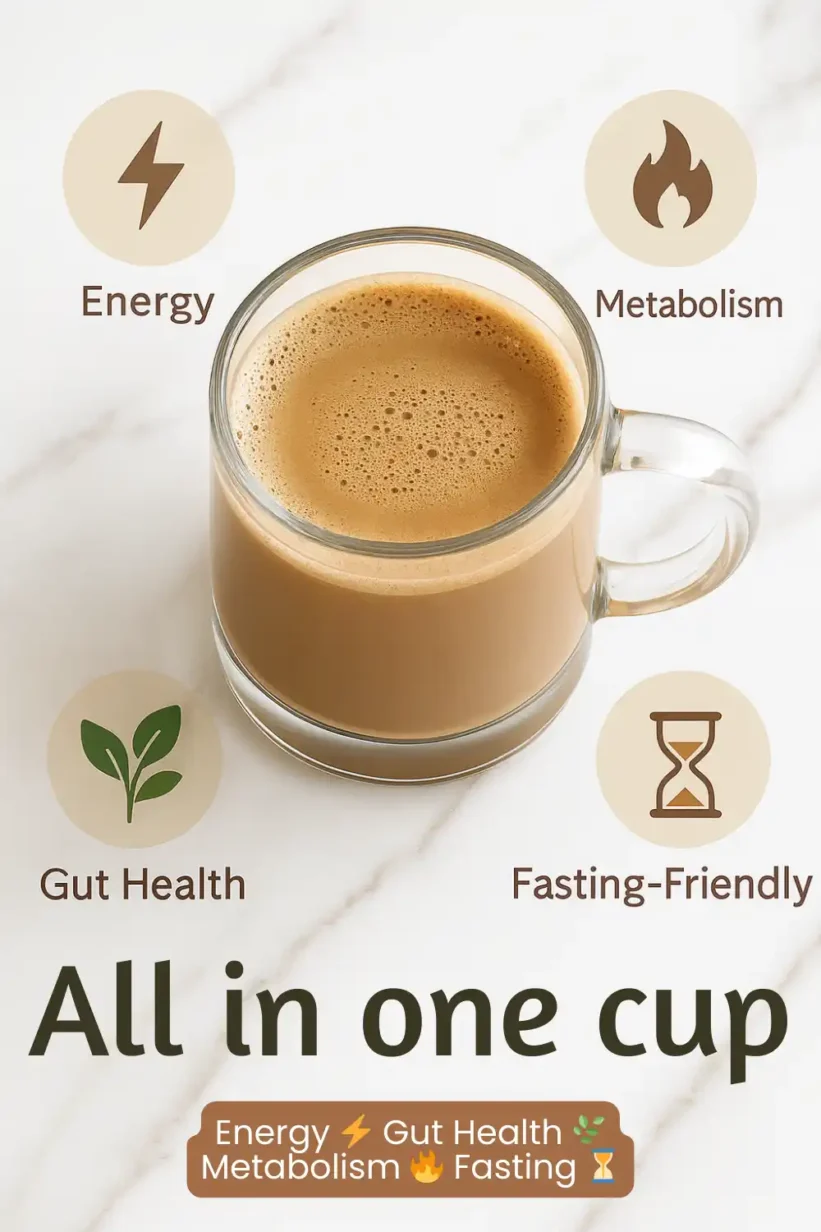
What Does Mushroom Coffee Taste Like?
The first thing people ask me is simple: what does mushroom coffee taste like? The answer is that it’s familiar, yet different. It keeps some of the bold notes of coffee but introduces a smoother, earthier balance that feels more grounded and less acidic. Here’s how the flavor experience breaks down.
Flavor Profile
So, how does mushroom coffee taste? Imagine your usual coffee, but with less bite and more depth. Chaga can bring subtle chocolate tones, reishi adds a woody edge, and cordyceps gives a mild nutty note. Lion’s mane is often described as savory, almost umami. Together, the result is an earthy flavor that’s mellow and steady. According to Harvard Health, most people find it less acidic and easier to enjoy than a standard brew. “Most people describe mushroom coffee as earthy and mellow, not overpowering.”
Comparison to Regular Coffee
When comparing mushroom coffee vs regular coffee, the differences stand out. Mushroom coffee usually contains less caffeine, meaning fewer jitters and less of a crash. It also tends to be smoother on the stomach thanks to its lower acidity. Flavor-wise, it’s mild, earthy, and balanced, while regular coffee is bold and often sharp. As UCLA Health notes, many drinkers switch because it feels gentler on digestion. “With less acidity and caffeine, mushroom coffee feels easier on the stomach than traditional brews.”
Here’s a quick table comparing the two coffee type on key points:
| Aspect | Mushroom Coffee | Regular Coffee |
|---|---|---|
| Caffeine | Lower, steady energy | Higher, fast spike |
| Flavor | Earthy, smooth, mild | Bold, bitter, acidic |
| Digestion | Gentler on stomach | May cause acidity |
| Wellness perception | Adaptogenic, antioxidant-rich | Purely stimulant |
To make the comparison clearer, here’s a look at mushroom coffee versus regular coffee side by side:
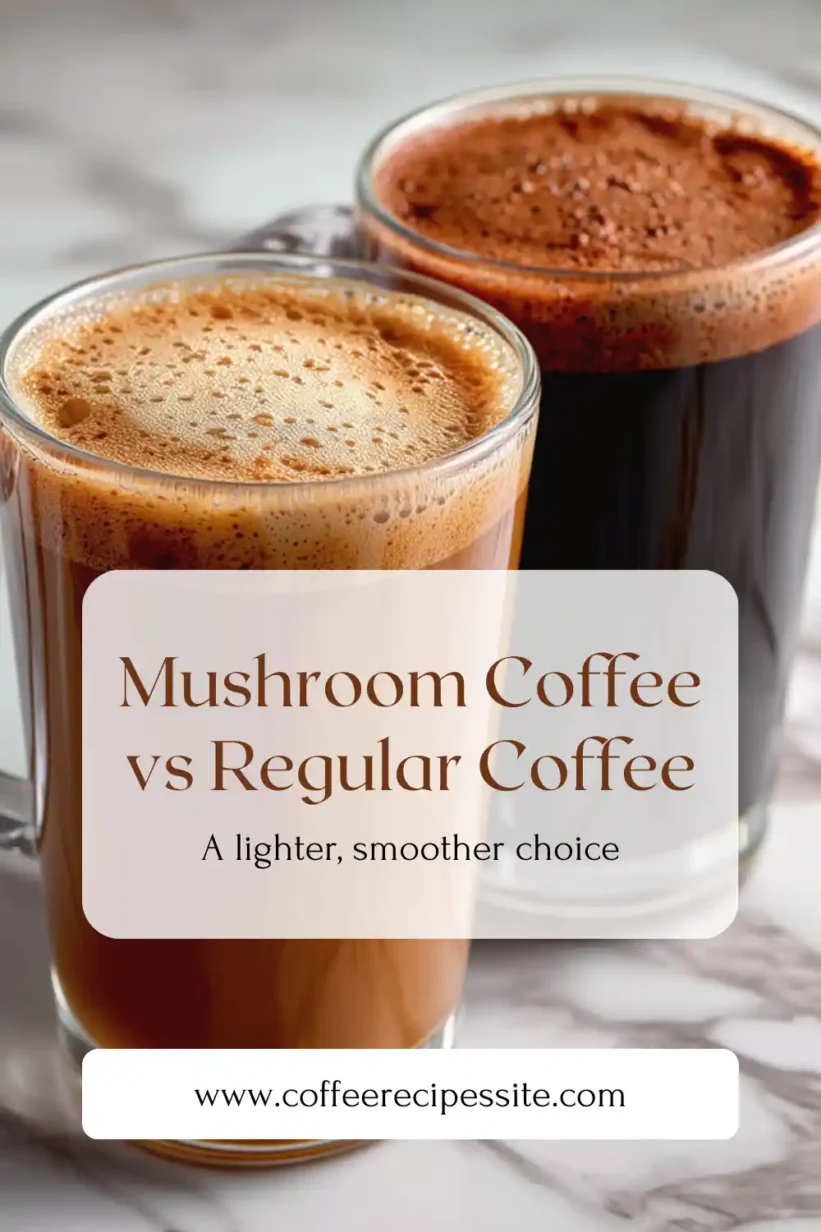

Homemade Mushroom Coffee
A simple homemade mushroom coffee recipe using hot water, coffee grounds, and mushroom powder blend. Enjoy an earthy, adaptogenic beverage that supports focus, energy, and digestion.
- Total Time: 6 minutes
- Yield: 1 cup
Ingredients
1 cup hot water (90–95 °C)
1 teaspoon ground coffee (regular or decaf)
½ teaspoon mushroom powder blend (reishi, chaga, lion’s mane, cordyceps)
Optional: oat milk, almond milk, or maple syrup
Optional: a pinch of cinnamon or cocoa powder
Instructions
-
Heat the water: Bring 1 cup of water to 90–95 °C, just below boiling point.
-
Mix coffee and mushroom powder: Add the ground coffee and mushroom powder blend to a French press or pour-over filter.
-
Pour and steep: Pour the hot water over the mixture and let it steep for 3–4 minutes.
-
Strain and serve: Press or strain the brew into a mug and enjoy as-is or with optional additions.
-
Customize your cup: Add oat milk, almond milk, maple syrup, or a pinch of cinnamon or cocoa powder as desired.
Notes
You can use decaf coffee or chicory root powder for a caffeine-free version. For a creamy latte, steam and froth your preferred plant-based milk before adding.
- Prep Time: 2 minutes
- Cook Time: 4 minutes
- Category: Drink
- Method: Brewed
- Cuisine: Fusion
- Diet: Vegan
Nutrition
- Serving Size: 1 cup
- Calories: 15
- Sugar: 0g
- Sodium: 5mg
- Fat: 0g
- Saturated Fat: 0g
- Unsaturated Fat: 0g
- Trans Fat: 0g
- Carbohydrates: 1g
- Fiber: 0g
- Protein: 0g
- Cholesterol: 0mg
Mushroom Coffee Recipe – Ingredients & Preparation
Making a this coffee at home doesn’t require fancy tools. With just a few simple ingredients, you can brew a cup that balances energy and calm. Here’s the straightforward method I use, plus some options if you like to customize your drinks.
Ingredients List
These are the core mushroom coffee ingredients I keep in my kitchen. You can swap or add to them depending on your taste:
- 1 cup hot water (90–95 °C)
- 1 teaspoon ground coffee (or decaf, see how to make espresso at home)
- ½ teaspoon mushroom powder blend (reishi, chaga, lion’s mane, cordyceps)
- Optional: oat milk, almond milk, or maple syrup
- Extra flavor: a pinch of cinnamon or cocoa powder
If you want a coffee-free option, try chicory root powder instead of ground coffee. And for a creamy latte version, you can learn how to steam milk at home and froth your favorite plant-based milk.
Step-by-Step Instructions
Here’s how to make mushroom coffee in five easy steps:
- Heat water to 90–95 °C (just below boiling).
- Mix ground coffee and mushroom powder in a French press or pour-over filter.
- Pour hot water over the mixture and let it steep for 3–4 minutes.
- Press or strain, then pour into your mug.
- Add steamed oat milk or a dash of sweetener if desired.
The easiest way to learn how mushroom coffee is made is to treat it like regular coffee with a functional twist. For busy mornings, I sometimes use pre-blended packets, an instant shortcut that still delivers the same earthy, adaptogenic taste.
Here’s what it looks like as mushroom coffee is being prepared.

Variations & Alternatives
One thing I like about mushroom coffee is its flexibility. Depending on the time of day or my mood, I’ll switch between a creamy latte version or a caffeine-free evening blend. Here are two popular ways to adapt your mushroom coffee blend.
Latte & Creamy Versions
If you enjoy the comfort of a foamy cup, try turning mushroom coffee into a latte. I usually steam oat or almond milk, add a dash of cinnamon, and pour it over my brew. Coconut milk works well if you want a richer, tropical note. For a barista-style touch, you can even learn how to make a cappuccino and apply the same foam technique to your mushroom coffee. This transforms it into a full adaptogenic latte. “Turning mushroom coffee into a latte is where function meets comfort.”
Decaf & Low-Caffeine Options
Sometimes I reach for a mushroom coffee decaf when I want the ritual without the extra caffeine. You can brew it with decaf beans, or skip coffee entirely and use chicory root or dandelion blends mixed with mushroom powder. Reishi and lion’s mane are great choices here, offering calm and focus. For a creamy evening treat, look at this breve coffee recipe for inspiration, though remember it’s not fasting-friendly. “A decaf mushroom coffee keeps the ritual without the late-night jitters.”
Here are two popular variations I often prepare at home:

Final Thoughts
For me, this mushroom coffee recipe is less about trends and more about balance. It blends the comfort of coffee with the grounded benefits of adaptogenic mushrooms. Some mornings I make it strong and simple; other times I experiment with oat milk or spices. That flexibility is what makes it a reliable part of my routine.
The real takeaway is that mushroom coffee won’t change your life overnight, but it can fit smoothly into a healthy lifestyle. It’s a superfood coffee that delivers steady energy without the sharp edge of regular brews. And like any ritual, the value is in how you make it yours.
Try brewing this adaptogenic drink tomorrow morning, and let me know which version of mushroom coffee fits your day best.
Frequently Asked Questions
Does mushroom coffee help you lose weight?
It may support energy and metabolism thanks to cordyceps and moderate caffeine, while reishi’s role in better sleep could help indirectly. Still, it’s not a magic fix. As Real Simple explains, any benefit comes from small, consistent lifestyle choices.
Is mushroom coffee good for diabetics?
Animal and early human studies suggest reishi may influence blood sugar, but results are mixed. According to Healthline, it should never replace medical treatment. Think of it as a supplement to a healthy diet, not a cure.
Does mushroom coffee make you poop?
Some blends, especially those with chaga, contain fibers and prebiotics that may support digestion. Responses vary by person. Verywell Health notes that certain mushrooms act as natural prebiotics, which can benefit gut health.
Does mushroom coffee break a fast?
A plain cup of mushroom coffee is nearly calorie-free and generally safe during fasting. Once you add milk or cream, it breaks the fast. For creamier drinks, see this breve coffee recipe and save it for your eating window. As Medical News Today highlights, it all depends on what you add to the cup.
What does mushroom coffee taste like?
Most describe it as earthy, smooth, and mild with less acidity than regular coffee. According to Harvard Health, this makes it easier on the stomach while still delivering familiar coffee notes.
References
UCLA Health. (2023, March 15). Should you switch to mushroom coffee? UCLA Health. https://www.uclahealth.org/news/article/should-you-switch-mushroom-coffee
Harvard Health Publishing. (2023, January 24). Mushroom coffee: Worth a taste? Harvard Medical School. https://www.health.harvard.edu/nutrition/mushroom-coffee-worth-a-taste
Wikipedia contributors. (2025, February 20). Mushroom coffee. In Wikipedia. https://en.wikipedia.org/wiki/Mushroom_coffee
News-Medical. (2023, September 19). The truth about mushroom coffee: Benefits vs. hype. News-Medical.net. https://www.news-medical.net/health/The-Truth-About-Mushroom-Coffee-Benefits-vs-Hype.aspx
Real Simple. (2023, April 5). Mushroom coffee: Benefits, downsides, and how to make it. RealSimple.com. https://www.realsimple.com/mushroom-coffee-benefits-7496388
Verywell Health. (2024, June 14). Mushroom coffee: Benefits and risks. VerywellHealth.com. https://www.verywellhealth.com/mushroom-coffee-benefits-11799399
National Center for Biotechnology Information (NCBI). (2011). Ganoderma lucidum (Reishi mushroom) monograph. In Natural Standard Herbal Pharmacotherapy Monographs (pp. 113–118). Bethesda, MD: U.S. National Library of Medicine. https://www.ncbi.nlm.nih.gov/books/NBK92757/
Wang, J., Cao, B., Zhao, H., & Feng, J. (2016). Sustained release of Ganoderma lucidum polysaccharides using poly (lactic-co-glycolic acid) microspheres for improved hypoglycemic effect in diabetic mice. Scientific Reports, 6(1), 29540. https://www.nature.com/articles/srep29540
Healthline. (2023, February 2). Reishi mushroom: Benefits, side effects, and dosage. Healthline.com. https://www.healthline.com/nutrition/reishi-mushroom-benefits
Medical News Today. (2023, July 12). Mushroom coffee: Benefits, risks, and recipe. MedicalNewsToday.com. https://www.medicalnewstoday.com/articles/mushroom-coffee-benefits

